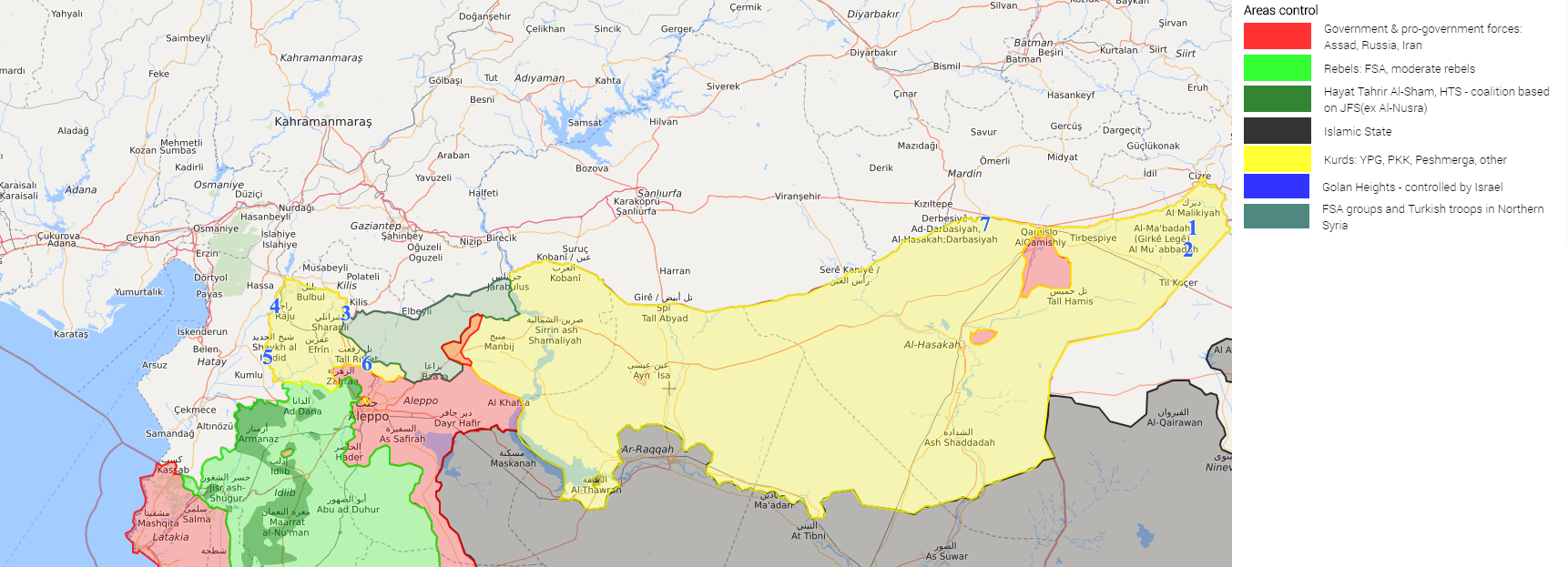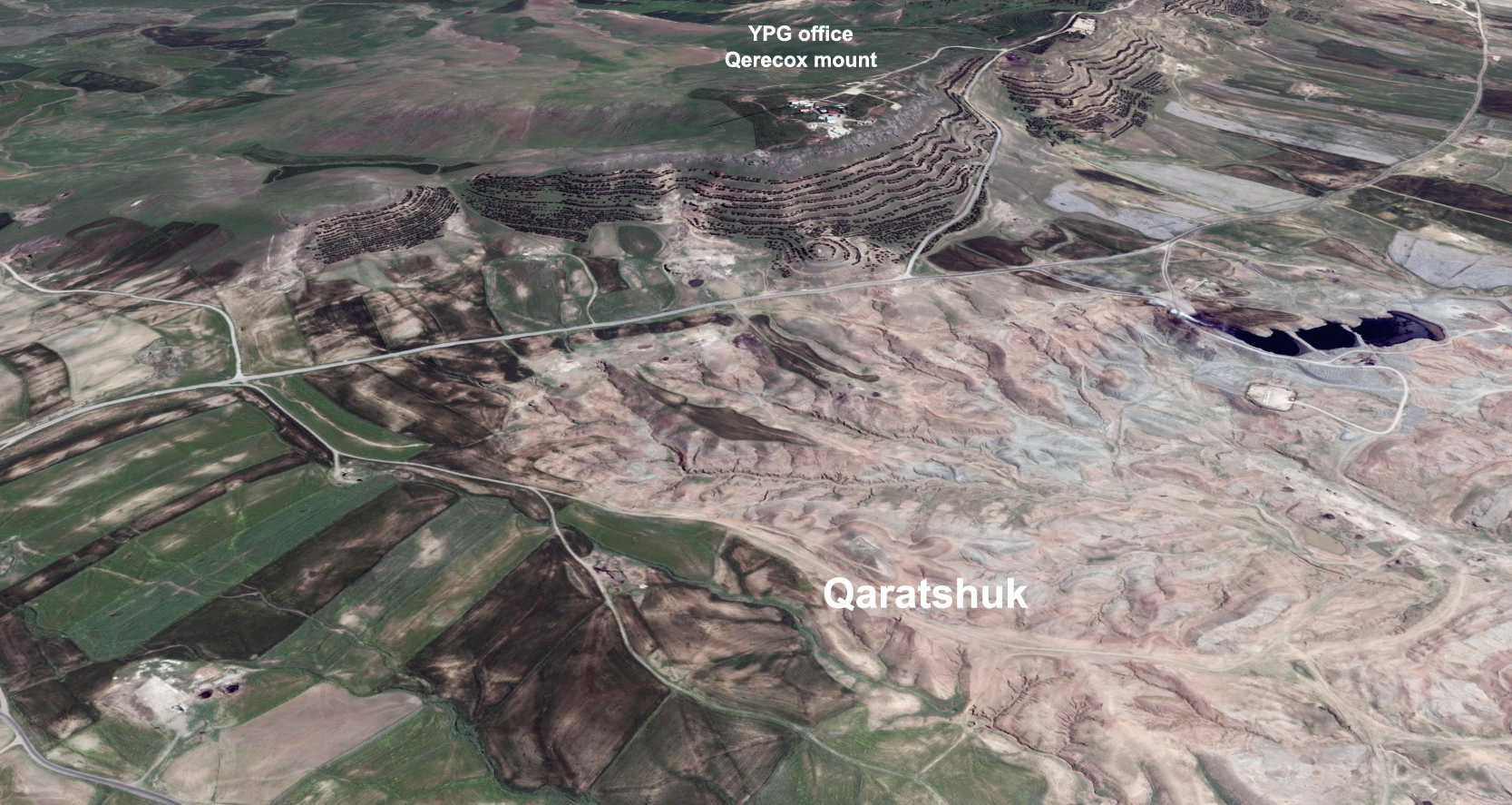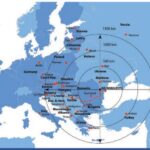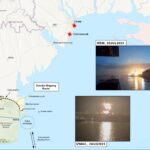The Turkish Armed Forces have attacked the Kurdish militia YPG and the overall Syrian Democratic Forces (SDF) in northern Syria, between April 24 and 26. These attacks consisted in air strikes and artillery fire and were conducted in response to the SDF’s offensive against Da’esh in Raqqa. Turkey fears the SDF’s increasing warfighting capabilities and territorial foothold.
1. The YPG-led SDF supported by the United States’ Combined Joint Task Force Operation “Inherent Resolve” (CJTF-OIR) are close to isolating the Da’esh self-proclaimed capital, Raqqa, from all sides. The Raqqa offensive has been heavily contested by Turkey which sees Washington’s support for the SDF as a direct threat to its national security due to the YPG’s link with the PKK – a Kurdish Marxist terror group engaged against Turkey since 1984. 2. Turkey has thrown its own bid for a Raqqa offensive which involved the “Euphrates Shield” opposition groups with limited Turkish armored and special operations forces support. However, the United States has declined the offer and continued the partnership with the SDF. 3. Fearing SDF enhanced capabilities and growing territorial control on its borders, Turkey attacked seven YPG positions in Syria and several other PKK positions in Iraq.

Universal Awareness Live Map – Syria screenshot with T-Intelligence notes pinpointing the Turkish attacks.
- Qerecox mountain, Hasakha. Turkish Air Force bombed an YPG command and control center, destroying a broadcast antenna and killing the press officer.
- Rumeilan airbase. Turkish Air Force bombed YPG cargo, with U.S. forces in “danger close” proximity of the raid.
- Ferferik, (Afrin) Aleppo. Turkish artillery shells hit YPG/ SDF positions.
- Rajo district, (Afrin) Aleppo. Turkish artillery shells YPG positions.
- (Afrin) Aleppo. Turkey and YPG exchange mortar fire.
- Tel Rifat, Aleppo. Turkey-backed O-ES forces and YPG exchange artillery fire.
- Dirbesiye, Hasakha. YPG fire at the Turkish tank deployment near the borderline.
4. The situation The Turkish General Staff justified its actions in a statement today, saying they were intended to prevent PKK members from funneling “terrorists, arms, ammunition and explosives to Turkey.” They have also hit targets in mount Sinjar, where the KRG’s Pashmerga is clashing with the PKK.
GEOLOCATION OF U.S. SOF INSPECTION
5. At least two U.S. AH-64 Little Birds were filmed landing on Qerecox mount, Hasakha province to inspect the damage. Hundreds of Syrian Kurds rallied to protest the Turkish attacks and to plea the US to take measures against it.
Kurdish mothers ask American protection against Turkish attacks. “Our sons fight ISIS with you in Raqqa but we r being attacked” @VOAKurdish pic.twitter.com/mgnOtb5KmV
— Mutlu Civiroglu (@mutludc) April 25, 2017

Location of Turkish Air Force strike on YPG office near Qaratshuk (geolocation conduced by T-Intelligence based on openly available footage)
6. According to Al-Monitor, officials from the US-led Coalition familiar with the details of the strikes said Turkish officials had informed the United States of its plans before they were executed. Turkey had sought to coordinate the strikes with the Qatar-based Combined Air Operations Center (CAOC), which controls and commands the U.S. air campaigns in Syria and Iraq, among others, with Coalition partners. According to one of the officials, “CAOC turned them down.” Turkey went ahead with the strikes anyway.
7. The consequences of these Turkish raids could be devastating for the Raqqa Offensive. The YPG/SDF are now demoralized, and could shift their attention from the Battle of Tabqa, Raqqa operation, towards the Turkish attacks and the border cities, therefor lowering the pressure on Da’esh. Furthermore, this could affect the Kurdish-American cooperation, due to expected pressure from the YPG to the later, requesting to deter Turkey’s attacks.
8. The United States has limited leverage to stop Turkey’s attacks on YPG/SDF. Moreover, the U.S. air campaign against Da’esh is dependent on the strategic NATO Incirlik Airbase located on Turkish territory. While U.S. engineers have built tactical airfields in northeastern Syria to support the air campaign against Da’esh, none of them can substitute Incirlik in terms of size, logistics and security. The tactical airfields in Syria are mostly used by heavy lifters for supplying troops on the ground.
9. The United States will maintain the fragile status quo between Turkey, its NATO ally, and the SDF, its counter-Da’esh partner at all costs. To appease Turkey, U.S. diplomatic efforts are vital to counter-balance the Department of Defense process of boosting arms transfers to the SDF given the impeding assault on Raqqa city.
Bonus: Turkish air strike on PKK targets in northern Iraq
Founder of T-Intelligence. OSINT analyst & instructor, with experience in defense intelligence (private sector), armed conflicts, and geopolitical flashpoints.






